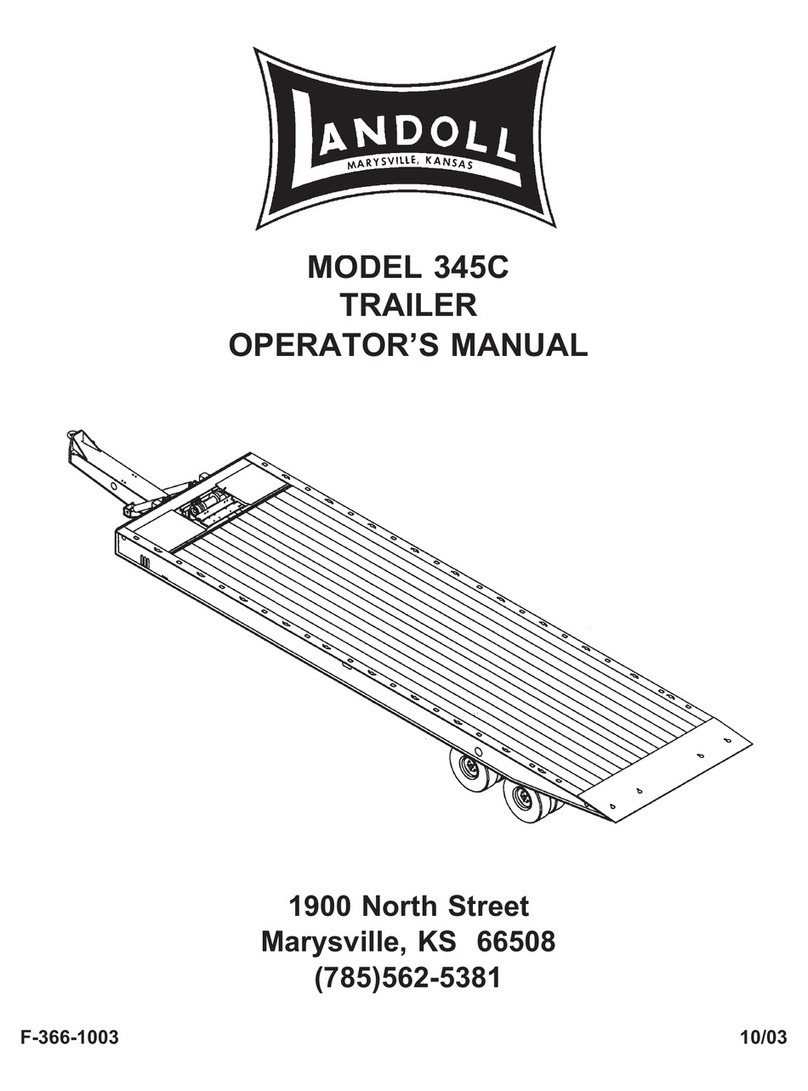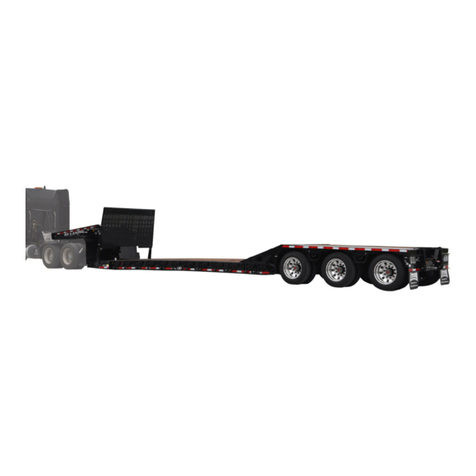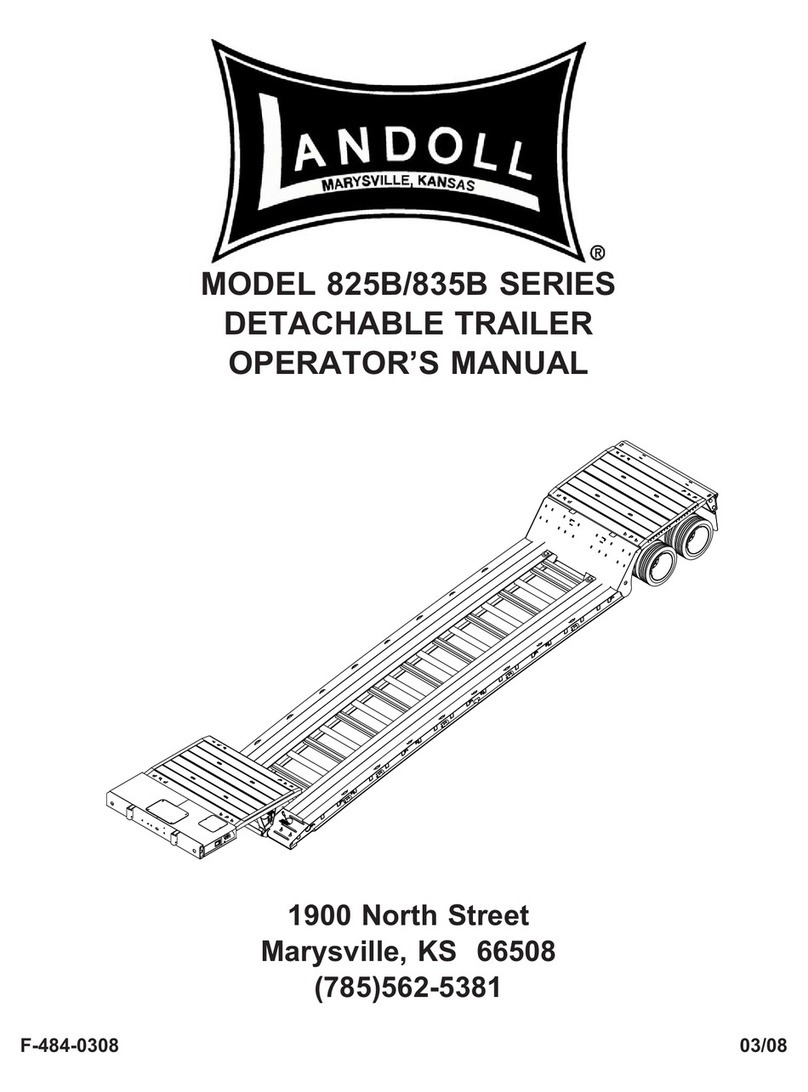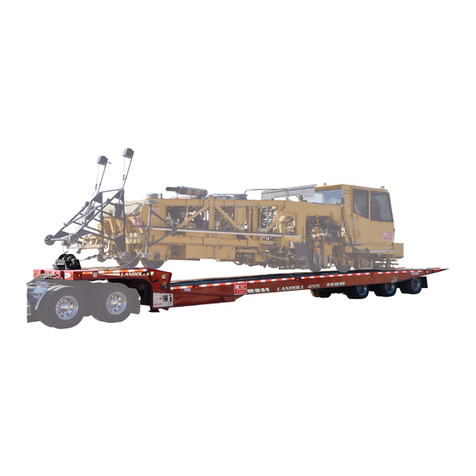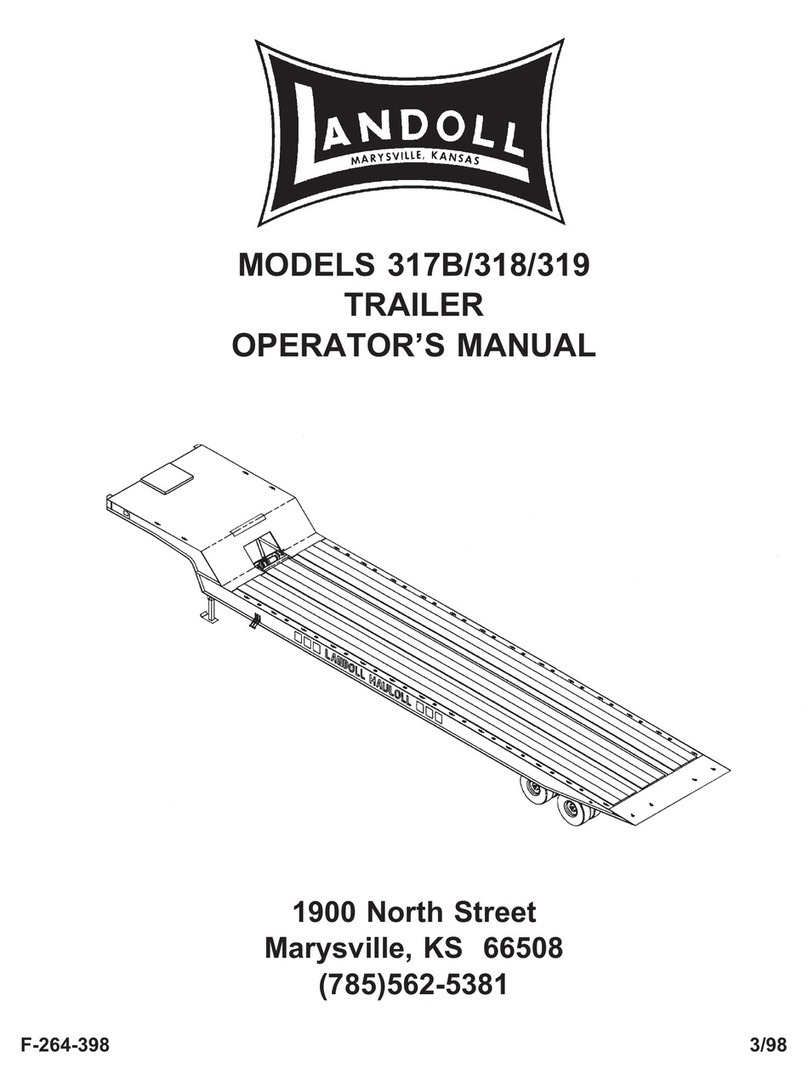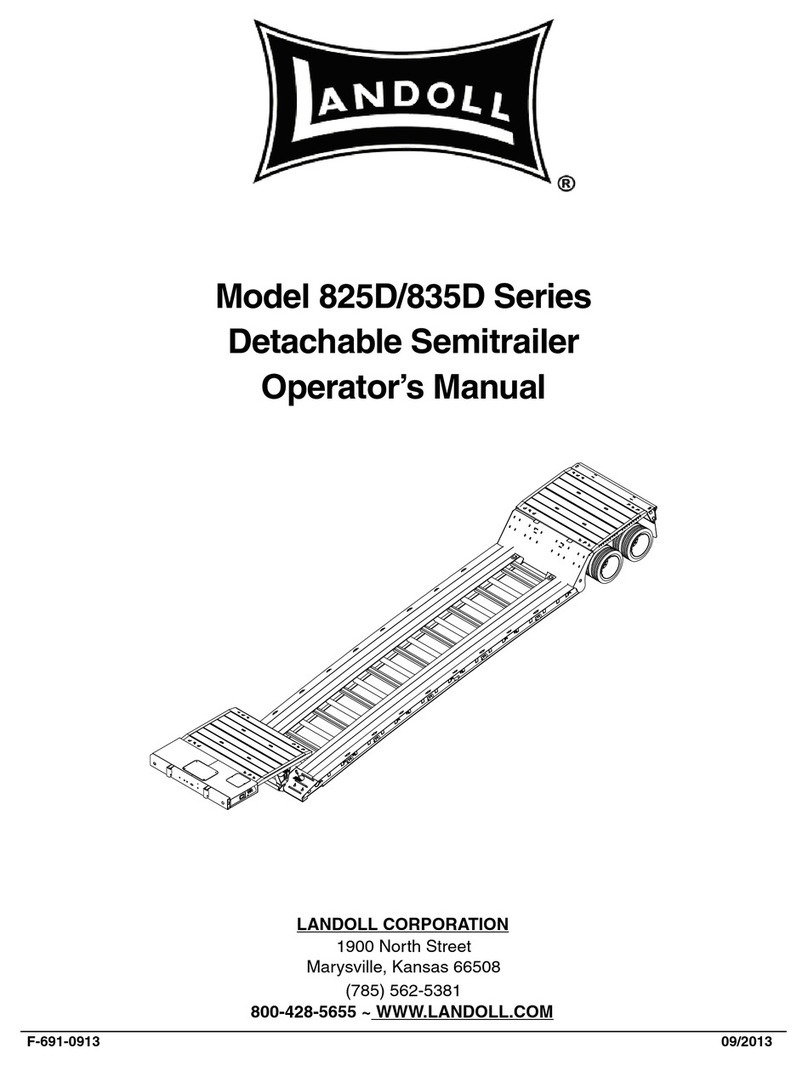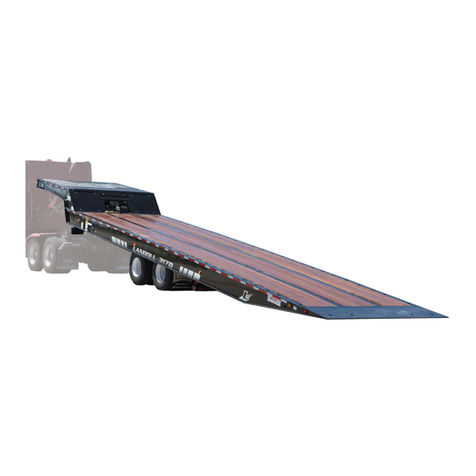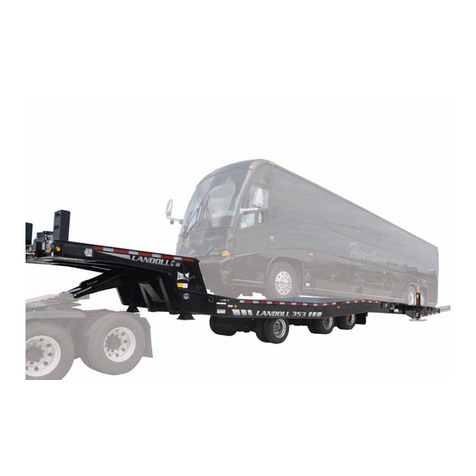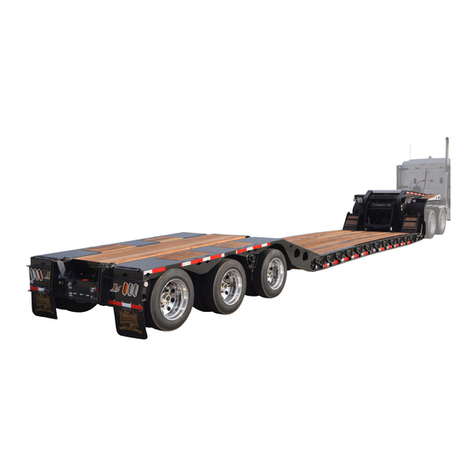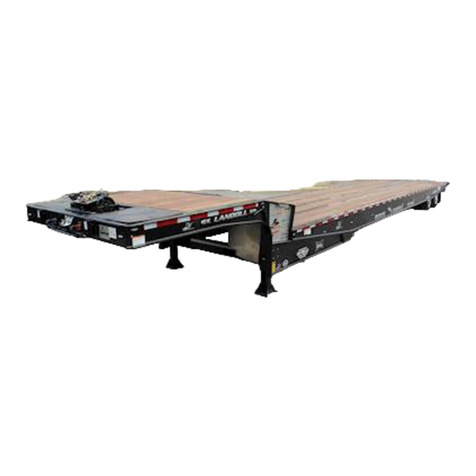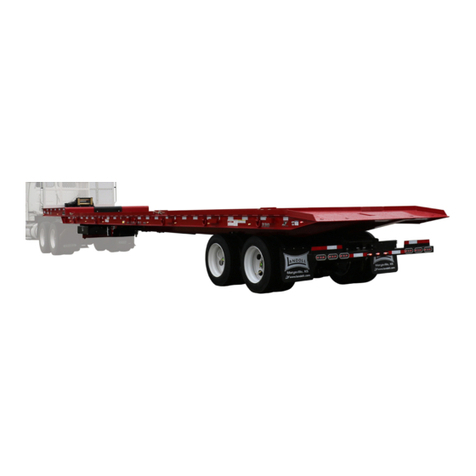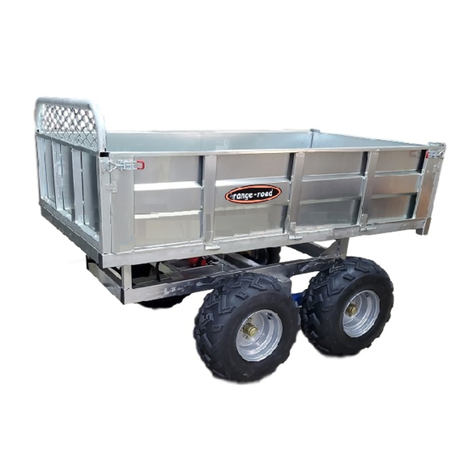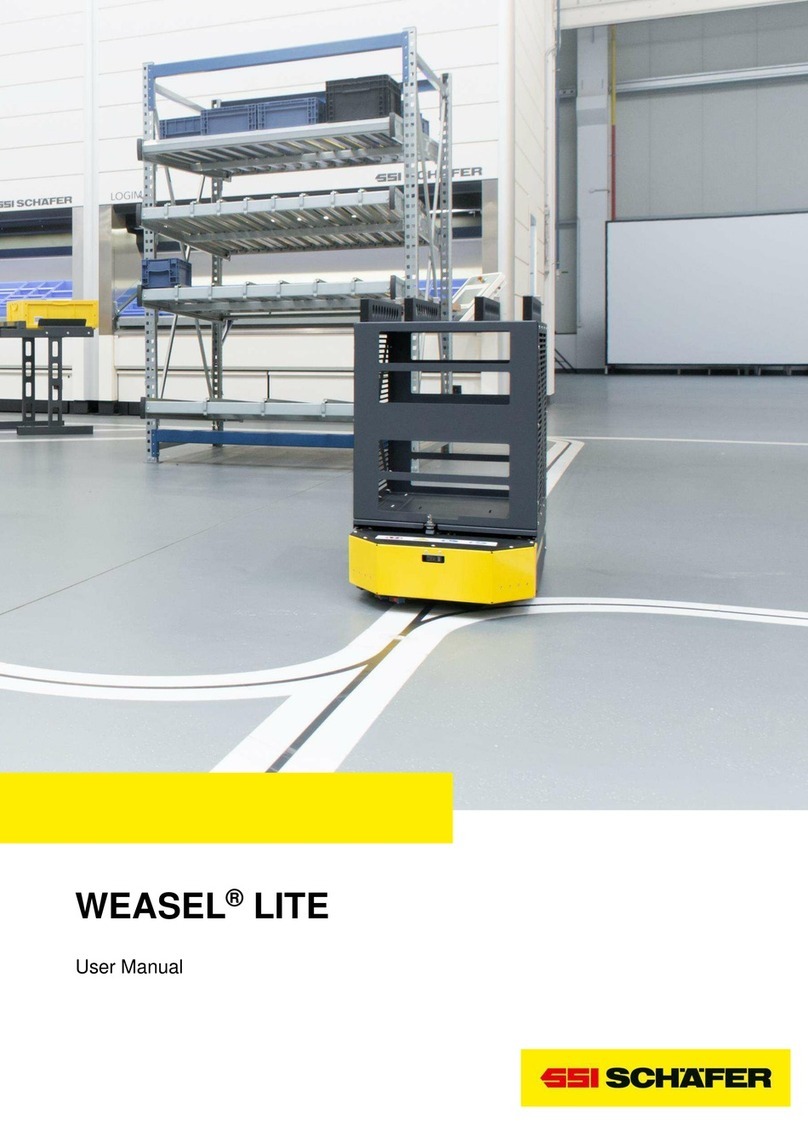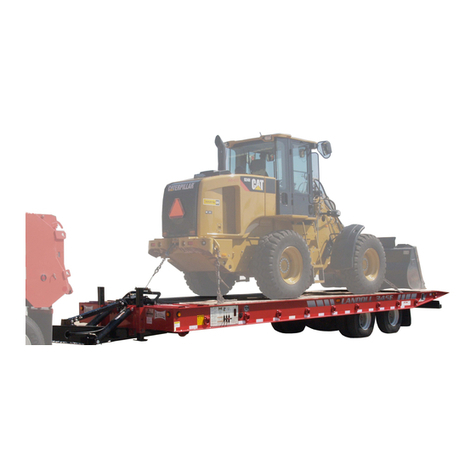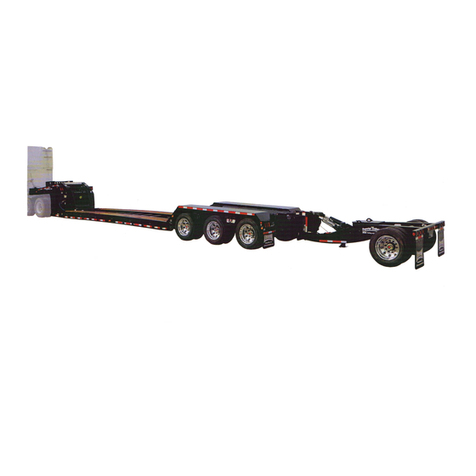
LANDOLL CORPORATION
TRAILER FIVE YEAR LIMITED WARRANTY POLICY
Landoll Corporation warrants each new Trailer structure manufactured by Landoll Corporation to be free from defects in materials and
workmanship. This limited warranty is subject to specific exclusions and does not apply to any trailer which has been: 1) subjected to
or operated with loads which, at any time, have exceeded the trailers rated capacity or design limits: 2) repaired or altered outside our
factory in any way so as, in our judgment, to affect its stability or reliability: 3) subject to misuse, negligence, accident, or has been op-
erated in a manner expressly prohibited in the instructions; or not operated in accordance with practices approved by Landoll Corpora-
tion. Trailer structure shall be considered the framework of the trailer (mainframe and/or rear frame weldment, gooseneck weldment
and undercarriage weldment) which is fabricated by Landoll Corporation.
The sole obligation of Landoll Corporation under this warranty shall be limited to repairing or replacing, at its option, in accordance with
the schedule below, a defective new Trailer structure which shall be identified to Landoll Corporation by way of a Landoll Corporation
e-mail Warranty Claim Form within five (5) years from the date of registration of Trailer. Warranty, expressed or implied, will be denied
on any Trailer not properly registered with the Landoll Corporation Warranty Department within ten (10) days of the first retail sale.
Landoll Corporation Warranty Staff will identify components listed on a Warranty Claim required to be returned for further analysis. All
parts returned to Landoll Corporation must be shipped with a Return Materials Authorization (RMA) provided by the Landoll Corpora-
tion Warranty Staff. Defective components must returned by the purchaser to Landoll Corporation with transportation and freight
charges prepaid within fifteen (15) days after receipt of the RMA. The examination conducted by Landoll Corporation of returned parts
shall disclose to its satisfaction the extent the component may be detective.
All labor and parts warranty MUST be authorized by Landoll Corporation Warranty Staff. Failure to do so will result in no warranty
payment of any kind. Labor will be reimbursed in accordance with published shop rates pre-approved by the Landoll Corporation War-
ranty Staff. Time authorized for specific work will be limited, where appropriate, to the hours listed in the Landoll Corporation author-
ized Flat Rate Schedule.
THIS WARRANTY IS EXPRESSLY IN LIEU OF ALL OTHER WARRANTIES OF MATERIAL, WORKMANSHIP, DESIGN, APPLICA-
TION OR OTHERWISE WITH RESPECT TO ANY EQUIPMENT, WHETHER EXPRESS OR IMIPLIED, INCLUDING WARRANTIES
OF MERCHANTABILITY AND FITNESS FOR A PARTICULAR PURPOSE, AND OF ALL OTHER OBLIGATIONS OR LIABILITIES
ON THE PART OF LANDOLL COPRPORATION.
New Trailer Structure Schedule: Landoll Corporation shall bear that portion of the cost of repairing or replacing the new structure of
the Trailer found to be defective within a sixty (60) month warranty period prorated on the following basis:
One (1) Year - 100% Three (3) Years - 70% Five (5) Years - 50%
Two (2) Years - 80% Four (4) Years - 60%
All Bottom Dump and Industrial and Utility Tag Trailers are exempt from the 5 year structural warranty and carry a 12 month structural
warranty, due to the rugged and abusive off road use in which these off road units typically operate, and are subject to the Component
Schedule below .
Component Schedule: Components manufactured by Landoll Corporation (other than the Structure) and Components supplied by
other manufacturers shall be warranted under the following schedule:
I. Axles, Suspensions, Landing Gear, Wheels, Rims, Hubs, Rollers and Cam Followers,
Hydraulic Valve Body and other Landoll Corporation Components.
Coverage: 1 year 100%, Over 1 year 0%
II. Air Lines, Springs, Air Bags, Leveling Valves, Bearings, Brake Valves, Paint, Oil Seals, Engines,
Brake Drums, Shock Absorbers, Electrical, Cylinders, Wear Plates, Hydraulic Hoses & Connections
Coverage: 1 - 6 months 100% Over 6 months 0%
III. Tires and Tubes Coverage: Warranty claims must be made directly to the tire dealers.
IV. Wood Components Coverage: 0%
This warranty does not expand, enlarge upon or alter in any way, the warranties provided by the original manufacturers and suppliers
of component parts and accessories. This warranty excludes such parts or accessories which are not defective, but may wear out and
have to be replaced during the warranty period, including, but not limited to, light bulbs, paint, brake lining, brake drums, wood pieces
and the like. (Tire Warranties are expressly excluded from Landoll Corporation warranty herein.) Purchaser is expected to pay all re-
pairs or replacement costs, in connection with this Agreement, including sales and other taxes immediately upon completion of work
performed.
LIMITATION OF LIABILITY: Landoll Corporation shall not be liable to purchaser for any incidental or consequential damages suffered
by the purchaser, including, but not limited to, any commercially reasonable charges, expenses or commissions incurred in connection
with effecting cover or any other reasonable expense incident to the delay or other breach of warranty by Landoll Corporation, any loss
of or damage to any cargo loaded or shipped in or on the Trailer, loss of anticipated profits, transportation expenses due to repairs,
non-operation or increased expense of operation costs of purchased or replaced equipment, claim of customers, cost of money, any
loss of use of capital or revenue, equipment rental, roadside assistance, or for any special damage or loss of any nature arising at any
time or from any cause whatsoever.
LIMITATION OF REMEDY: In the event of Landoll Corporation failure to repair the Trailer subject to the warranty contained herein, the
purchasers sole and exclusive remedy against Landoll Corporation shall be for the repair or replacement of any defective part or parts
of the Trailer subject to work or repair within the time period and manner set forth herein. This exclusive remedy shall not be deemed
to have failed of its essential purpose so long as Landoll Corporation is willing and able to repair or replace defective parts in the pre-
scribed manner.


